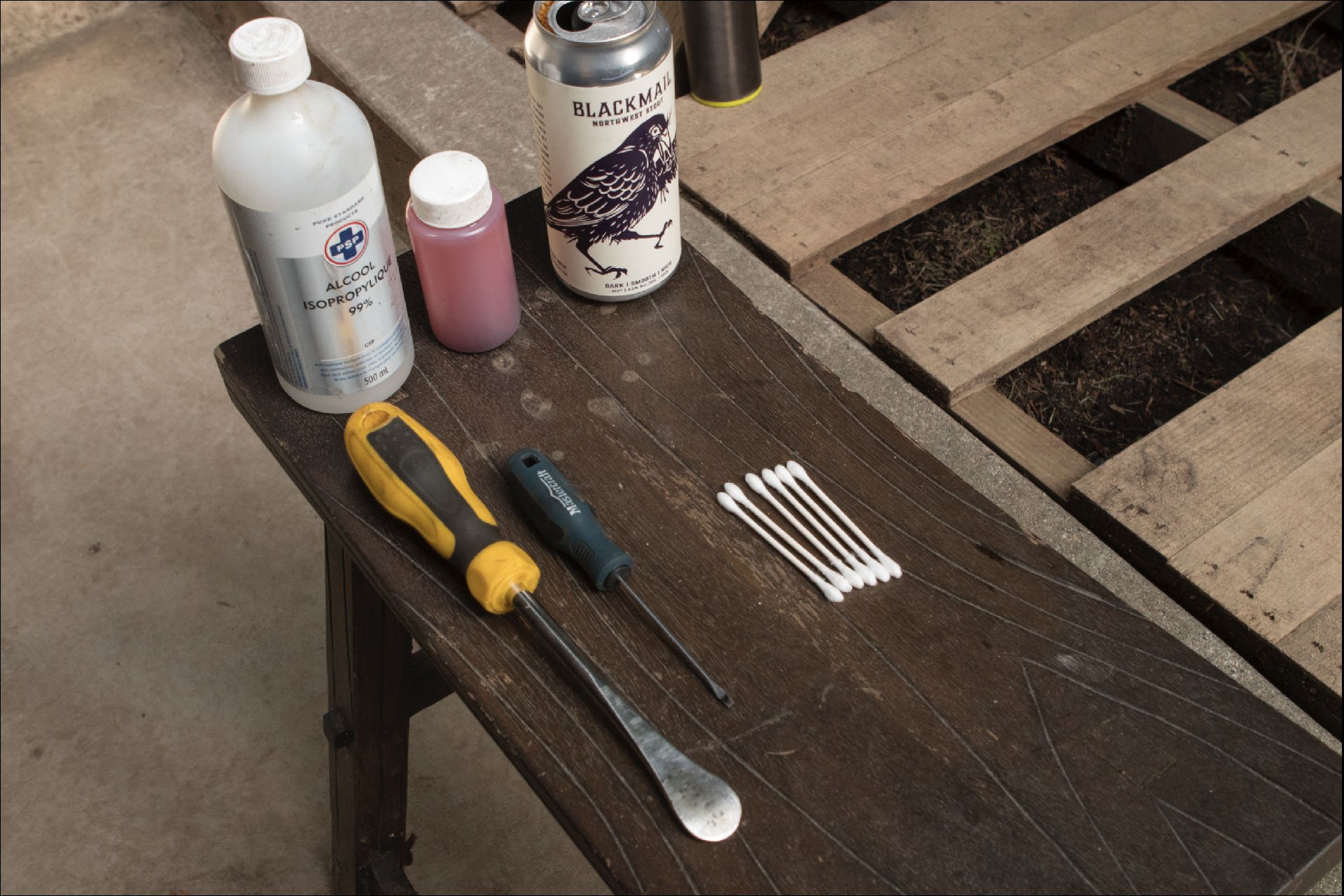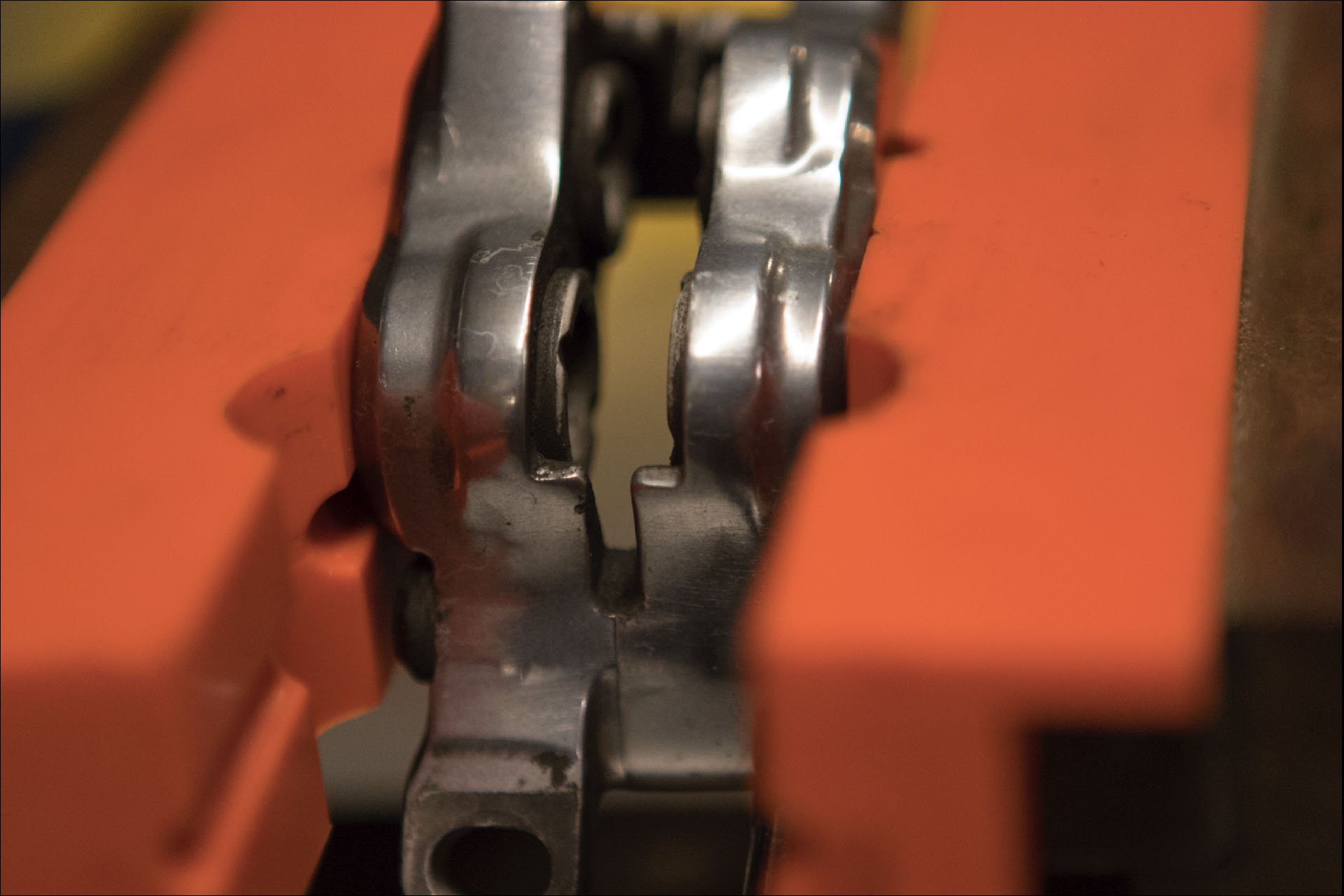How To Clean Pistons While Still In Block

Pandemic Do-It-Yourself
Clean Your Brake Pistons!
Before we dive too deeply into this mildly technical task, I need to come clean about my experience as a mechanic. I worked in 4 different Vancouver bike shops over a span of about six years. Most of it was part time or during summers while going to school but one year I worked six days a week mostly wrenching. Overall I probably spent more time on the tools than doing sales by a 70:30 margin, and I learned some stuff about fixing bikes. Cantilever brakes, V-brakes, side-pull, and even U-brakes; all the rim brakes were in my wheelhouse. Unfortunately my shop time, in the primordial mid-to-late 80s, pre-dated disc brakes, and was even before suspension, so I have some gaps in my expertise, and there's no quick way to reproduce the endless task repetition you get working in a shop. I didn't manage my 10,000 hours but there was a time during my year-long stint at Cap's* when most days felt at least that long. I also worked at Robson Cycles, Bicycles Plus and Boulevard Bikes/West Point, all in the city of Vancouver.

Some rubbing alcohol, a handful of Q-Tips, a slot/flathead screwdriver (for most Shimano brake pads), some mineral oil or DOT 5.1, depending on what fluid your brake takes, and some beer. If find this task pairs well with a Strange Fellows Blackmail Stout. The yellow-handed Pedro's tool above is actually a shop tire lever, but I use it exclusively for resetting pistons and spacing brake pads.

I pour a little isopropyl alcohol into the cap of the bottle for easy access and do the same for whatever brake fluid the brakes at hand require, in this case mineral oil.
So while I have decent skills with wheels and tires and bearings and drivetrains, I'm not wizard at, for example bleeding brakes. I enjoy the process so much that I usually bleed each end at least twice. My approach to French 100 was similarly repetitive. So I'm not coming to you as an expert as much as someone who likes working on bikes and writing about working on bikes. While I'm probably under-qualified to lead you through this task, I have faith in your ability to recognize my errors and point them out in the comments to help out those who may miss them.

These aging XTR dual-piston brakes belong to my wife. She was pleased to see me working on her bike in the middle of my work day, and I failed to disabuse her of that notion by telling her I was working on an article.

Her front caliper was in need of a bleed and this seemed like a perfect opportunity.
I'm slightly embarrassed to say that this particular maintenance procedure is one I'd never even attempted pre-COVID. Who knew cleaning brake pistons was such a satisfying and effective task? Shockingly, I didn't even realize how the piston and seal interfaced until I did a little more research today.
Now that I've read the disclaimer, let's dig in.
Brakes get all sorts of dirty. And then they get really hot and bake on all that sludge. Fortunately, cleaning your pistons isn't much more difficult than changing your brake pads, which also happens to be the best time to pull out the Q-Tips. I'll lay it out below with several dozen photos of brake calipers, some with pads, and others without.
How Disc Brake Pistons Work
I always assumed that brake pistons slide through their seals and retracted thanks to negative pressure in the hydraulic system. It turns out only part of that is partly true. The seals, which are square rings rather than o-rings, actually flex and move with the piston. This nifty design allows the pistons to gradually self-adjust as the pads wear, at least in a perfect world. The seals also act as a supplemental return spring so your brakes reset more positively and quickly. Which means theoretically we don't clean pistons to make them move more freely, we do it to prevent contaminants from entering the system and I suppose to extend the life of the seals.
In my experience however, the action of my brakes always feels noticeably lighter and more positive after a good clean. Without these results I wouldn't be so keen the task. It's wise to do this every time you replace your brake pads because by the time they are worn out they will have pushed more deeply out of the seals since you'll need to make room for the thickness of the new pads. Doing this will push those contaminants into your brake system.

This graphic from Park Tool shows what happens when you depress your brake lever. Pistons are shown in white and the wide black bands are the seals. The left image shows the brakes idle while the right image shows the seal, in its recessed gland, flexing as pressure is applied to the piston and then to the rotor.
Step 1 - Remove Pads (two-piston caliper)

If you can't remove your brake pads, you probably need a better instructor, but let me tell you it's pretty easy. Sort that out before attempting this maneuver, walk before you swim and all that.
We're dealing with Shimano brakes here so you either have a cotter pin holding the pads in, or a 3mm hex head bolt with a safety clip on the other end. After the clip and bolt are removed, simply lift the pads and their keeper out from the top. At this point you'll notice the pistons, either 2 or 4, are conspicuously exposed.
Step 2 - Premilinary Scrub

I do a preliminary clean at this point before manipulating any pistons because it's easy to push a piston in inadvertently during the next step. I put a little isopropyl in the lid of the bottl, dip in a Q-Tip, and then give the exposed portion of the piston a bit of a rim job. You'll likely remove a remarkably gratifying amount of black film from each piston.
Step 3 - Full Clean

Once the first wipe is done it's time to allow the pistons to extend further for a better clean. To do this use a blunt tool* carefully, or a finger even more carefully, to prevent one piston from extending, while gently pulling the brake lever. This allows the other piston to push out further than normal exposing even more glorious black contamination. Be careful not to push the piston out of the seal, because at best you're going to have to re-do the bleed and at worst you'll create a large mess. Once you are there, use your Q-Tip and alcohol again, remembering to have a swig of beer at regular intervals. After quenching and cleaning, I dip the Q-Tip in a little Mineral Oil (for Shimano or Magura) or Dot 5.1 (for SRAM or Hayes), and coat the exposed portion of the piston. A quick clean with a shop towel here to make sure no fluid will contaminate your fresh pads is a good precaution. Reverse the process and repeat this step for the other piston(s).
*I use a Pedros long tire lever or a nylon tire lever for this step

Almost as satisfying as scooping some caramel-coloured goop out of your ear.
Step 4 - Reset
Reset the pistons by gently pushing them back into the caliber body until they sit flush. Again I use my Pedro's tool for this, slowly and gently alternating between the two so as not to apply too much force, but you could temporarily install a set of old brake pads to protect the pistons while levering them apart with a screwdriver. Wiping the cavity with alcohol, and taking another swig, are both worthy strategies at this juncture.
Step 5 - Install New Pads or re-install Existing
Just drop them in and ensure the pistons are fully retracted, if you are putting in fresh pads. Otherwise there won't be room for your rotor or at best you'll get some rotor rub once your wheel is back in place.

These XTR brakes have seen a lot of action and will certainly benefit from this task. Removing pads is no more challenging so we'll skip to step 2 below.

These were working fine when they were last in service but you can see that things are pretty caked up and the pads are ready to be replaced. Shimano brakes tend to work pretty well when deeply worn however, for those of you who like to squeeze every micrometer of value out of your pads.
Four-Piston Calipers
It's a little trickier when you are dealing with a quad-piston brake but only marginally. Having a bleed block that spaces calipers with pads removed for a bleed is a very useful tool at this point. The steps are the same but it's much easier if you can prevent one pair of pistons from moving while you clean the other pair.

Step 2- Preliminary Clean - this step is no different with quad pistons but you'll likely find it a little tricky to get the Q-Tip between the pistons and the caliper housing on the outside edges of each piston. Just get lots of alcohol on your weapons and dig in. (note - never put your brake caliper in a vice without soft jaws and even then don't clamp too hard)

Step 3 - Full Clean. At this point you are going to want to fully retract one pair of pistons to install the bleed block. If you don't have an appropriate tool (again a nylon tire lever works well) it makes sense to reinstall your old brake pads to protect your pistons to help fully push the rotors back into their seals. Once they are retracted, install a bleed block but only between one set of pistons. Now you can block one of the remaining pair of pistons and use your brake lever to slowly and carefully ease the remaining piston out of its seal so you can clean more of the shaft. Once that is done, push the clean piston back in and repeat the procedure.

Finally, switch the bleed block to the clean pistons and do the remaining pair. Gently press the pistons back in and replace your pads and you're ready to get riding.

Since parts like brake pads are getting scarce, we're going to be checking out some after-market pads. These ones are from MTX Braking. These are their Red Label 'Race' ceramic compound, designed for power and silence. I'll also be trying their Gold Label HD pads aimed at a more heavy duty experience for extra durability and 'control.'

I told you this was satisfying! I used about 3-Tips per piston.
Some maintenance tasks are more frustrating than others. For me that is often bleeding brakes but for others mounting tubeless tires or installing inserts is on that list. As with most things in life, I find the more I roll up my sleeves and dive into tasks, the easier they become. And that ease seems to ramp up as I dig into more complex tasks over time. This however, is on the list of projects that are highly satisfying without any frustration to dim your enthusiasm. Just remember to keep those pads and rotors clean, and reward yourself with another tallboy once you're done.
If you have additional tips or corrections, they would be an excellent addition to the comments.
Trending on NSMB
How To Clean Pistons While Still In Block
Source: https://nsmb.com/articles/clean-your-brake-pistons/
Posted by: johnsonolcou1989.blogspot.com

0 Response to "How To Clean Pistons While Still In Block"
Post a Comment